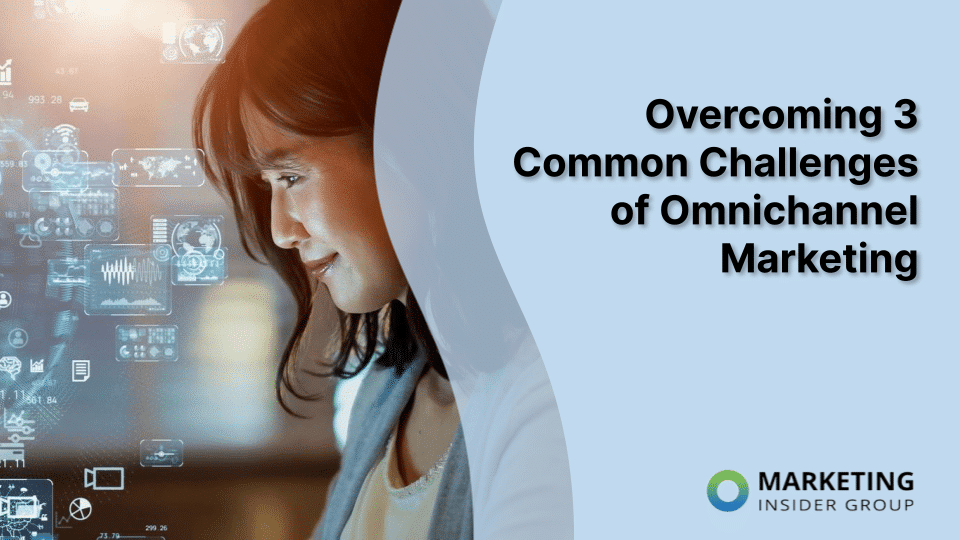
Overcoming 3 Common Challenges of Omnichannel Marketing
Put simply, nonprofit omnichannel marketing is a strategy that involves promoting your ideals or case for support within and between multiple marketing channels. For example, your organization might promote its goals and ask for support from donors and volunteers via direct mail, text messages, emails, social media, and out-of-home marketing. Ideally, communication should still feel seamless to recipients, even when they are exposed to messages on different channels.
Omnichannel marketing increases the number of touchpoints your nonprofit has with its donors. Instead of supporters only seeing messages from your organization when they check their email, they’ll be reminded of your organization and its goals any time they open social media, flip through their mail, or even check their text messages.
This added exposure can lead to increased awareness of your nonprofit, reach more new supporters, and boost fundraising revenue. Additionally, you’ll be able to establish dedicated audiences across multiple platforms, helping you provide a better donor experience by addressing each supporter’s communication preferences.
Along with these benefits, however, omnichannel marketing can come with some challenges. In this guide, we’ll explore three common obstacles:
- Integrating communication channels is difficult.
- Your nonprofit struggles to allocate resources.
- Keeping up with trends feels overwhelming.
One of the goals of an omnichannel approach is to build a seamless supporter experience that organically builds more awareness of your organization. To get started, we’ll address how you can integrate communications to keep all of your messages consistent.
1. Integrating communication channels is difficult.
Without taking an integrated approach, your omnichannel marketing strategy could come across as disjointed and even confusing for your supporters. For example, let’s say you reach a supporter with direct mail and social media ads. However, each message uses a different color scheme, the tone varies from friendly to formal, and you forget to add your logo to the social media ad.
To prioritize constituents’ experience, it’s crucial that your nonprofit keep its messages consistent and work to actively integrate the channels. Here are some ways to cultivate a more cohesive, unified marketing campaign:
- Maintain visual consistency. Each marketing message should have a similar color scheme, fonts, and logos to strengthen your branding. This also makes it much easier for your supporters to recognize messages from your nonprofit, especially if they’re exposed to your messages in an unfamiliar format or communication channel.
- Choose a theme or story. Each campaign should have a clear central theme or story that your messages tie back to, whether that message is delivered via a marketing email or printed flyer. For example, maybe your food pantry leverages storytelling in its Thanksgiving donation appeal by sharing testimonials from families who benefited from the pantry during past holidays.
- Create a donor journey map. Using past campaign data, outline the journey a donor will take between learning about your nonprofit and making a donation (or, what motivates them to continue giving). Create an “ideal donor journey” and a map of your organization’s current state journey to identify both friction points in the journey and surprising moments to land on that journey. This way, your journey remains human-centric while also reaching your constituents with the right messages, at the right times, and through the right channels and formats.
- Link digital and traditional platforms. Without anything binding them together, digital and traditional media channels can feel entirely separate. Consider adding QR codes to printed media that link to your website, donation form, social media pages, and long-form online content. To lead digital viewers to more traditional channels, you could add a form to your website that they can use to sign up to receive direct mail.
- Develop a measurement strategy. Measuring the performance of an omnichannel marketing strategy is different from the way single and multi-channel efforts are tracked. Just like platforms should be integrated, you should also strive to optimize the way data flows and integrates with your various systems and reports. Developing a sound measurement strategy that properly attributes metrics to their respective channels is paramount during the planning process.
With a more united approach, your omnichannel strategy will facilitate a clear, logical path for supporters to follow. Eventually, they’ll reach the bottom of the funnel and take your nonprofit’s desired next action, whether that’s making a financial donation or signing up to volunteer.
2. Your nonprofit struggles to allocate resources.
For some organizations, it can be difficult to allocate any funding to your marketing efforts—and when you’re using many different channels, this issue can be even more challenging. Additionally, staff members might struggle to find the time to create and manage marketing materials.
Here’s how your nonprofit can save itself time, money, and stress:
- Save time by front-loading your marketing efforts (e.g., creating a detailed content calendar for the entire month) and automating messages (e.g., schedule sending the month’s marketing emails). Working with an agency or consultant who specializes in nonprofit marketing and fundraising can also alleviate the burden on your busy staff members.
- Save money by optimizing free or low-cost marketing channels. Many digital marketing channels are free to use, requiring only your time to strategize and develop the posts.
- Limit stress by designating a specific portion of your funding toward marketing when creating your annual budget. While this seems obvious, determining these figures in advance can prevent over and underspending on marketing (and limit the mental load of budgeting along the way). Some organizations have found success with establishing a cross-functional internal team which includes representation from marketing, fundraising, communications, and membership/volunteer, who manage this shared budget line item along with shared objectives and key results (OKR).
As a nonprofit professional, you know that there are certain myths about nonprofit finances that can contribute to the stress and difficulty associated with budgeting for marketing costs. Some people believe that nonprofits can’t or shouldn’t earn a profit, while others think that those with the least amount of overhead are the most successful—in other words, all of your spending should be allocated to aiding beneficiaries.
But, investing in activities that are meant to reach more supporters and gain funding for your mission is just as important. Marketing preserves your organization’s longevity, helping you serve more of those in need.
3. Keeping up with trends feels overwhelming.
Like any other industry, marketing has trends. Following these trends helps to keep your approach fresh and engaging to your supporters. But because trend cycles seem to go in and out of style faster than ever in the digital age, it can be difficult to stay up-to-date.
While you’ll need to keep an eye out for short-lived trends like social media challenges, here are three that have more staying power in the nonprofit marketing world:
- An emphasis on personalization. With such easy access to data about audiences, personalizing marketing messages has become the norm. To get started, create donor segments defined by characteristics like giving behavior, demographic information, or communication preferences. Then, craft differentiated marketing messages that will appeal to each group uniquely.
- Increased sustainability. Audiences want brands and organizations to show that they value sustainable practices. When using print media to promote your organization, consider using recycled materials or opting for things like small postcards that won’t require envelopes to send. Another positive aspect of following this trend is that these practices can limit costs, too!
- Influencer marketing. Look for influencers who are relevant within your nonprofit’s niche and partner with them. The partnership could involve sending them branded merchandise they wear in social media posts or inviting them to vlog one of your fundraising events. These connections will help you reach new supporters in the influencer’s existing audience.
Your nonprofit should strive to weave trends like these into each platform, even more traditional ones like direct mail. It’s easy to fall into a formulaic pattern when it comes to marketing, but over time this approach can become stale to supporters. Instead, shift to a more innovative mindset in which your organization is always looking for a new idea, message, or strategy that will grab your audience’s attention.
While it’s likely that your organization will encounter a few bumps on its journey toward an integrated, omnichannel marketing strategy, it’s well worth the end result. These tips, along with help from a nonprofit marketing and fundraising agency, can help your organization reach brand-new audiences, strengthen bonds with your existing supporter base, and cultivate a well-rounded digital presence.






